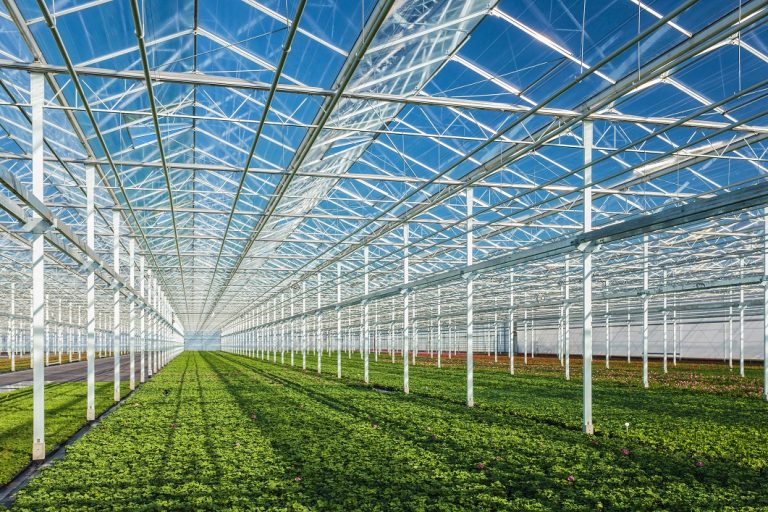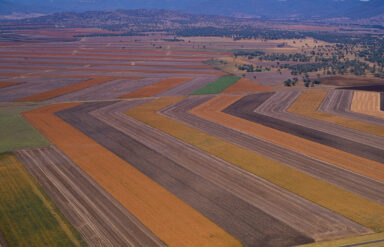We believe protected cropping presents an opportunity for Australian farmers and investors that is almost certainly set to become more important both here and internationally.
We explore why and what it means for private debt investors.
THE CHALLENGE OF FEEDING A GROWING POPULATION
Feeding the planet’s growing population is likely to be one of the major global challenges of the Twenty-First Century.
A United Nations study has found that to provide for an expected global population of 10 billion by 2050, agricultural production will need to lift by a staggering 50 per cent. This fact alone requires a serious rethink of farming practices around the world.
But there’s an added complication in this equation too: climate change is impacting the reliability of traditional farming techniques while urbanisation is reducing the amount of available land suitable for agriculture.
Against this backdrop, there is little doubt that protected cropping – with its potential for higher yields and more consistent quality – will have an increasingly important role to play in the world’s agricultural mix.
WHAT IS PROTECTED CROPPING?
Protected cropping is a generic term that refers to growing crops under some form of protection, cover, shade cloth, greenhouse or glasshouse, according to Protected Cropping Australia (PCA).
In other words, it involves using cover to control the climate, thereby ensuring crops can be grown out of season or in more favourable conditions.
This isn’t exactly a new practice. The Romans were reportedly growing cucumbers in artificial conditions by the time of Tiberius’s reign (42BC – 37AD). And by the 17th Century, both the Dutch and the English had a complex system of greenhouses that allowed them to grow fruit and vegetables suited to a Mediterranean climate in northern Europe.
PROTECTED CROPPING TODAY
Almost 400 years later the Dutch remain at the forefront of protected cropping, with covered farming helping produce some of the world’s highest per square kilometre yields.
Despite being roughly two-thirds the size of Tasmania and having just 18,700 sq km of agricultural land (by way of contrast Australia has 3,727,210 sq km), the Netherlands is the world’s second largest exporter of agricultural products.
Historically, Australia has been sitting at the other end of the protected cropping equation.
Abundant land, a sparse population and unrivalled climatic and geographical diversity have made both yield and year-round production less of an imperative than in many other markets.
But that’s now changing.
Climate change is both warming our continent and forcing a shift in Australia’s agricultural zones. It is also leading to an increased number of severe weather events, such as floods, cyclones and bushfires: all of which can have a severe impact on a farmer’s ability to deliver produce to market.
Australia’s water supply is also becoming less reliable, as the recent history of the Murray-Darling system shows.
At the same time, changing consumer expectations are combining with a growing population to make year-round uninterrupted delivery of fresh fruit and vegetables more important than ever.
THE OPPORTUNITIES FOR GROWTH IN PROTECTED CROPPING IN AUSTRALIA
It’s perhaps little wonder then that protected cropping is the fastest growing food-producing sector in Australia, according to PCA.
The organisation claims protected cropping is now worth around $1.8 billion a year and directly employs more than 10,000 people. It also claims protected cropping is growing at a rate of four-to-six per cent a year, at the same time as the value of Australia’s agricultural sector is declining.
Crops particularly suited to this form of intensive agriculture include tomatoes, cucumbers, capsicum, lettuce and strawberries as well as certain herbs, Asian greens and many varieties of flowers.
Each of these crops has the potential to produce substantially higher yields in a controlled environment than when left to the vagaries of the climate. For instance, greenhouse-grown tomatoes can produce a yield of 76kg a square metre when hothoused compared to 18kg a square metre when field-grown – an efficiency gain of 422 per cent. For cucumber, the difference is 100kg a square metre compared to 20kg a square metre, or 500 per cent. And for lettuce, the difference is 80kg a square metre compared to 10kg, an efficiency gain of 800 per cent.
The time it takes to bring a crop to harvest improves too, as does the consistency of the produce.
What’s more, each of these metrics is likely to improve further. Advances in new technologies such as artificial intelligence, cloud computing machine learning and data harvesting can combine with LED lighting and other production inputs to ensure crops are always kept in optimum growing conditions.
Using these technologies provides the potential for yield, consistency and quality to rise exponentially.
THE DOWNSIDE OF PROTECTED CROPPING
There are, however, a couple of major elephants in the room when it comes to protected cropping.
The first is energy. Obviously, keeping crops in such tightly controlled conditions requires significantly more of it than simply leaving them to the forces of nature in a field.
That’s potentially bad news for the environment and, managed poorly (such as through the use of Australia’s predominantly coal-fired energy infrastructure), protected cropping could even contribute to the climate change problem it promises to help overcome.
High energy usage is also expensive, eating into potential profits. In fact, energy usually accounts for around 30 per cent of the cost of any greenhouse project.
And, while some producers are obviating their reliance on high-cost energy by investing in their own renewable energy sources, this does nothing for the second elephant in the room: the substantial costs often involved in setting up protected cropping infrastructure.
According to one report compiled for the Queensland Department of Agriculture and Fisheries, even without the need to construct any energy infrastructure, these can range from $737,860 a hectare for soilless high roof poly tunnel through to $1,211,110 a hectare for a retractable roof structure. The costs of constructing state of the art controlled environment glasshouses are magnitudes higher. That’s before the cost of any self-generating energy infrastructure is added.
This means, to date, large multi-locational produce companies with access to capital – such as Costa Group – have dominated protected cropping in Australia.
THE OPPORTUNITY FOR PRIVATE DEBT IN PROTECTED CROPPING
That said, there are opportunities for private investors willing to provide the capital needed to build and maintain a protected cropping venture. Promising projects and producers requiring funding may not typically meet banks’ lending criteria, especially when it comes to security requirements.
But before racing to provide funding for this growing sector, we believe it’s important for any potential investor to consider three factors.
First, similar to any infrastructure project, a new protected cropping enterprise needs to be viewed as part-construction project, part-ongoing business. However, unlike infrastructure projects, which usually receive guaranteed returns in the form of government leases or toll revenue, there is not always the promise of a steady income at the conclusion of the project for farmers engaging in protected cropping. The expected yield on any investment needs to reflect this.
Second, the expertise of the grower is vital. You should always make certain they’re across the issues associated with protected cropping and that the project they’re embarking on is built on solid foundations, with sufficient cashflow to see it through both the construction and early business stages.
Many investors would be familiar with the Maria’s Farm failure – an ambitious project outside of Newcastle that aimed to produce 14,000 tonnes of capsicums and tomatoes a year. The project went into administration while still in the construction phase after suffering delays and sustaining $20 million of flood damage.
Finally, it’s essential that the produce that comes out of the farm has established routes to market. One reason Costa Group has been so successful at protected cropping is its established supply chains which extend into both major Australian supermarkets as well as internationally.
This last part of this equation is actually one of the more exciting possibilities for Australian farmers, withpossibilities for growth in exports given Australia’s reputation in East Asia for quality agricultural produce.
AND FINALLY…
Perhaps most important of all, any private investors looking to capitalise on protected cropping need to make sure the investment manager they choose understands both the construction and agricultural aspects of any project they invest in.
With our unique experience delivering funding across both sectors, Merricks is well placed to help you capitalise on the many opportunities that lie in Australia’s growing protected cropping sector.
Read more about our investments and expertise.
SOURCES/REFERENCES
https://foreignpolicy.com/2017/02/22/worlds-ability-to-feed-itself-in-jeopardy-u-n-warns-in-new-report-united-nations-global-trends-food-agriculture/
https://www.ancient.eu/article/446/what-the-roman-emperor-tiberius-grew-in-his-greenh/
https://www.abc.net.au/news/2019-03-02/the-future-of-farming-in-the-era-of-climate-change/10852926
https://www.graemesmithconsulting.com/images/documents/An%20Overview%20of%20the%20Australian%20Protected%20Cropping%20Industry%20Compatibility%20Mode.pdf
https://ausveg.com.au/app/uploads/technical-insights/VG16024-Final-Report-Complete.pdf p 48



